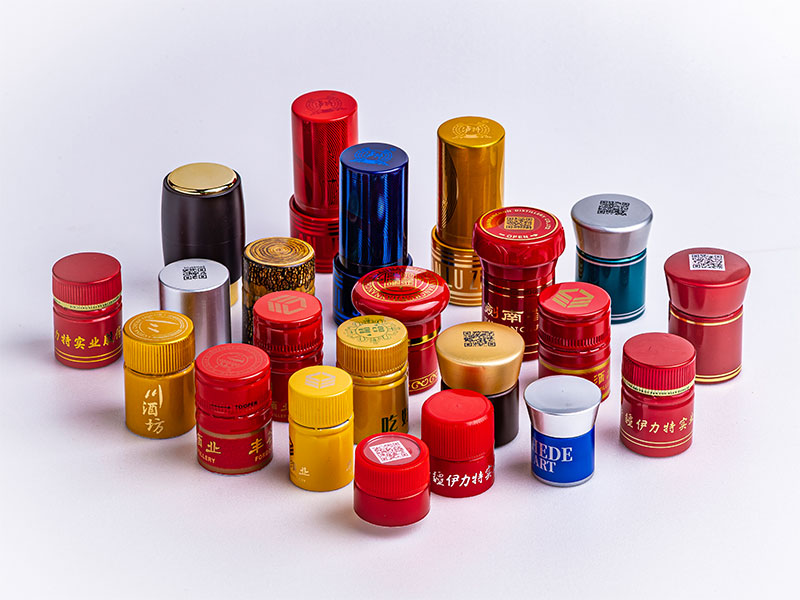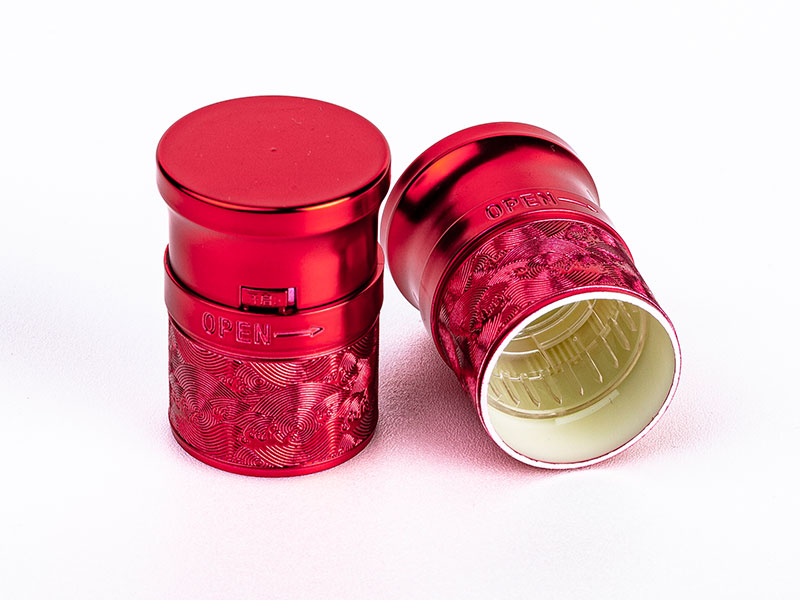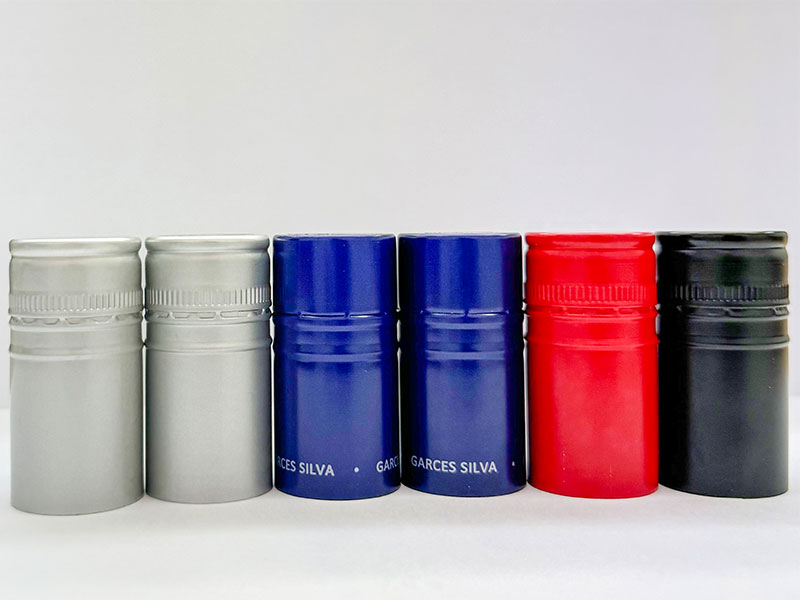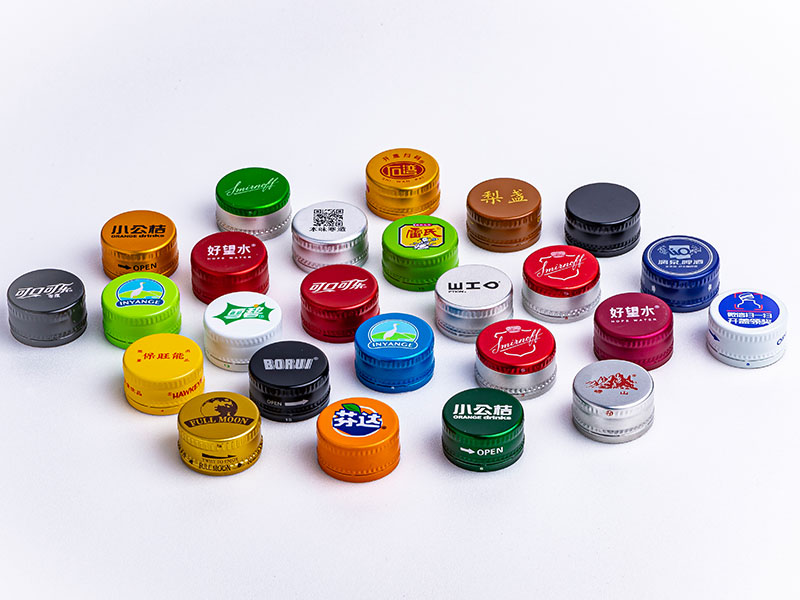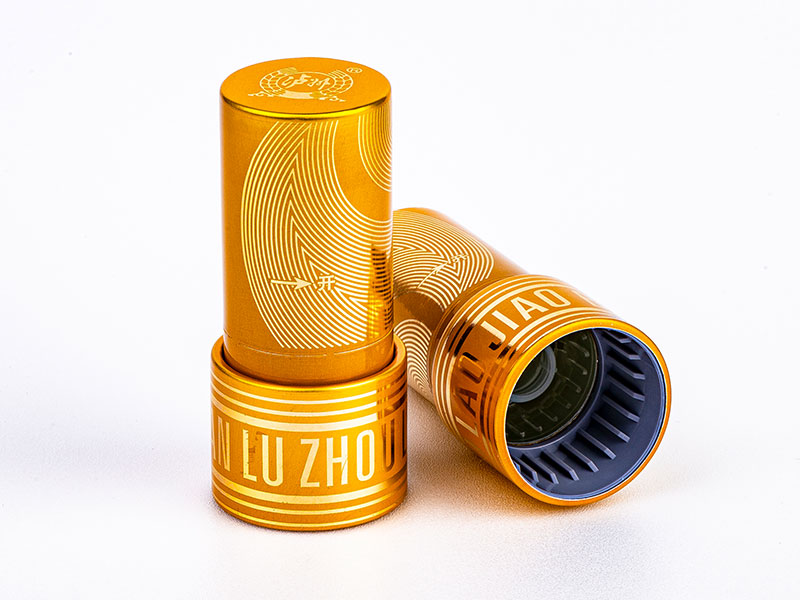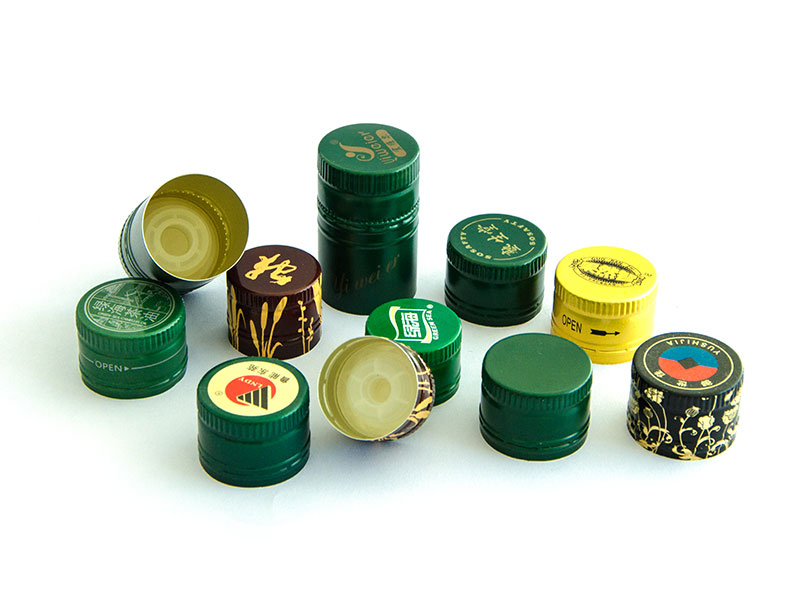30x60mm Aluminum Closures for Wine Bottles with Low Oxygen Permeability
30x60mm aluminum closures are precision-engineered screw or roll-on aluminum caps sized to fit wine bottles with a 30 mm neck diameter and 60 mm skirt height. They are specifically formulated to deliver low oxygen transmission characteristics to preserve wine aroma, flavor, and longevity. These closures are suitable for still, sparkling, and fortified wines that require controlled micro-oxygenation and protection from premature oxidation.
selling points:
- Low oxygen permeability for improved shelf-life and sensory stability
- High corrosion resistance and aesthetic finish options
- Precision fit for consistent sealing and reduced leak risk
- Compatibility with various internal liners to tailor oxygen ingress
- Recyclable aluminum body for sustainability
Construction and Components
The closure is composed of an aluminum shell and an inner sealing system (liner or induction/seal layer). Variants are available with different liner materials and oxygen-scavenging options.
- Body: Drawn or roll-formed aluminum alloy (30 mm bead diameter, 60 mm skirt height)
- Inner liner options:
- PVDC (polyvinylidene chloride) coated PE (low OTR)
- Saran-coated liner
- Nylon/PE with EVOH layer
- Heat-sealable PE with oxygen-scavenging additive
- Optional neck coating or varnish for corrosion resistance and additional barrier
Chemical Composition of Aluminum Alloy (Typical)
The aluminum shell is commonly made from a 1000 or 3000 series aluminum alloy depending on required strength and formability. Typical composition ranges are shown below.
| Element | 1000-series (Al 99.x) Typical wt% | 3003 (Al-Mn) Typical wt% |
|---|---|---|
| Al | 99.0 – 99.9 | 96.8 – 99.0 |
| Si | 0.05 – 0.25 | 0.20 max |
| Fe | 0.05 – 0.70 | 0.70 max |
| Cu | 0.02 – 0.20 | 0.20 max |
| Mn | 0.01 – 0.10 | 0.5 – 1.0 |
| Mg | 0 – 0.05 | 0.10 max |
| Zn | 0.02 – 0.10 | 0.10 max |
| Ti | 0.01 – 0.05 | 0.15 max |
| Others | 0.05 max | 0.15 max |
Notes:
- 1000-series (e.g., Al 1100) offers excellent corrosion resistance and formability.
- 3003 (Al-Mn) adds strength for deeper draws or heavier-duty closures.
Technical Specifications
| Parameter | Value / Range |
|---|---|
| Closure Type | Screw cap / Roll-on / Press-fit |
| External Diameter (bead) | 30.0 mm ± 0.1 mm |
| Skirt Height | 60.0 mm ± 0.5 mm |
| Material (body) | Al 1000 or Al 3000 series |
| Liner types | PVDC-PE, Saran-PE, EVOH-Nylon-PE, O2-scavenger PE |
| Surface finish | Bright (anodized-look), matt, printed, varnished |
| Coating / Varnish | Food-grade polyester or epoxy primer |
| Operating temperature | -20°C to 80°C (short term up to 100°C) |
| Max torque (installation) | 2.0 – 4.0 N·m (depending on liner/closure) |
| Weight per closure | 3.5 – 6.5 g (depending on alloy & design) |
| Recyclability | 100% recyclable aluminum body |
Oxygen Permeability and Barrier Performance
One of the primary performance indicators for wine closures is oxygen transmission. The effective oxygen ingress of a closure depends on liner selection, application torque, and bottle neck finish. Below are representative values from controlled lab tests (for guidance; real-world values vary with process).
| Liner Type | Typical OTR* (mL O2 / year @ 20°C) | Relative Barrier Rating |
|---|---|---|
| PVDC-coated PE | 0.05 – 0.20 | Excellent |
| Saran-coated PE | 0.1 – 0.4 | Very Good |
| EVOH/Nylon/PE | 0.2 – 0.8 | Good |
| O2-scavenger PE | 0.01 – 0.08 | Outstanding |
| Heat-seal PE (no barrier) | 0.8 – 3.0 | Moderate |
*OTR values are indicative and depend on closure application torque, bottle finish, liner compression, and temperature. Values shown are typical annual ingress per closure under standardized lab conditions.
Effective dissolved oxygen management:
- O2-scavenger liners actively reduce headspace oxygen post-bottling.
- PVDC and Saran coatings provide low intrinsic permeability ideal for long-age wines.
- EVOH layers give good barrier but can be sensitive to humidity and require proper liner design.
Physical & Mechanical Properties
| Property | Typical Value |
|---|---|
| Tensile strength (Al 3003) | 90 – 140 MPa |
| Elongation (Al 3003) | 10 – 25 % |
| Hardness (HV or HB equivalent) | Moderate (varies by temper) |
| Corrosion resistance | Excellent with varnish/primer |
| Formability | Excellent in 1000-series, good in 3000-series |
| Dimensional tolerance | ±0.1 mm (diameter), ±0.5 mm (height) |
Compatibility with Wine Types
| Wine Type | Recommended Liner / Closure Notes |
|---|---|
| Light-bodied white | PVDC/PE or EVOH liners for low OTR |
| Full-bodied white | PVDC or O2-scavenger liner for longer preservation |
| Red wine (short age) | Saran-coated or EVOH liners acceptable |
| Red wine (long age) | PVDC or O2-scavenger for minimal O2 ingress over many years |
| Sparkling wine | Special roll-on closures with suitable closure design and pressure ratings; verify CO2 retention and liner compatibility |
| Fortified wine | PVDC or O2-scavenger for best oxidative stability |
Notes:
- Choose liners based on desired micro-oxygenation profile. Some wines benefit from controlled oxygen ingress; others require near-zero ingress.
- Evaluate color and flavor interactions: most liners are non-reactive when formulated for food contact.
Dimensional Tolerances and Sealing Performance
| Dimension | Nominal | Tolerance |
|---|---|---|
| Bead/neck diameter | 30.0 mm | ±0.1 mm |
| Skirt height | 60.0 mm | ±0.5 mm |
| Liner thickness | 0.3 – 1.5 mm | ±0.05 mm |
| Helical thread pitch* | Application dependent | ±0.05 mm |
*Thread pitch and profile are matched to the bottle finish (e.g., 30/660, 30/600 equivalents). Proper mating with bottle finish is critical to sealing and OTR performance.
Sealing performance:
- Bench seal tests (vacuum, pressure decay) and CO2 retention tests for sparkling wines are recommended.
- Consistent application torque ensures uniform liner compression and predictable OTR.
Surface Finishes and Decoration Options
| Finish Type | Description / Use |
|---|---|
| Printed (offset/rotogravure) | Brand artwork, color, logo |
| High-gloss varnish | Premium look, additional corrosion protection |
| Matte finish | Modern aesthetic |
| Embossing / Debossing | Tactile brand differentiation |
| Anodized-look coating | Metallic sheen without electrolytic process |
All inks and coatings are food-contact approved and meet migration limits under relevant regulations when cured properly.
Quality Control and Testing
Standard quality checks performed on production batches:
| Test | Purpose | Frequency |
|---|---|---|
| Dimensional inspection | Verify diameter, height, and threads | 100% sampling or batch-based |
| Liner adhesion test | Ensure liner bonds to cap inner surface | Per production run |
| Oxygen ingress test (OTR) | Measure barrier performance | Periodic (lot) |
| Torque test | Verify application torque & removal | Batch sampling |
| Visual inspection | Coating/print defects, surface quality | 100% or lot sample |
| Corrosion resistance test | Salt spray or accelerated ageing | Periodic/qualification |
| Migration and food-safety tests | Regulatory compliance (EU, FDA) | Qual/periodic |
Certificates available: Materials Test Report (MTR), Food Contact Compliance (EU 10/2011, FDA where applicable), RoHS, REACH declarations on request.
Handling, Storage, and Shelf-life
Recommendations to maintain barrier and appearance:
- Store in dry conditions between 15–25°C; avoid prolonged high humidity.
- Avoid stacking heavy loads that deform skirts or threads.
- Keep away from strong oxidizers or corrosive chemicals.
- Typical shelf-life: 2–5 years when stored dry, cool, and out of direct sunlight. Liner properties (e.g., oxygen scavenger effectiveness) may diminish over time; use-first recommendations should be followed.
Packaging for shipment:
- Inner cartons with separators to avoid abrasion
- Palletized with shrink-wrap and desiccant if long transit or humid environments
Applications
Primary application: sealing wine bottles where oxygen ingress control is critical.
Other applications:
- Spirits and fortified beverages where flavor stability is desired
- Craft beverages and limited edition vintages requiring controlled aging
- Premium bottled products where aesthetic finish and recyclability are required
- Non-beverage applications requiring a 30x60 mm aluminum closure with low permeability (cosmetics, specialty oils, etc.), subject to compatibility testing
Ordering Information and Options
Typical customizable options:
- Alloy choice (1000 vs 3000 series)
- Liner type (PVDC, Saran, EVOH, O2-scavenger)
- Interior varnish or primer
- External printing, colors, varnish types
- Thread profile matched to bottle finish
- Inner foam or pressure ring options for specific sealing
Minimum order quantities, lead times, and price depend on customization. Contact supplier for samples, technical data sheets, OTR testing results, and regulatory compliance documentation.
30x60mm aluminum closures with low oxygen permeability are a versatile, recyclable, and high-performance solution for preserving wine quality. Selection of the proper liner and precise application control enables wineries to tailor oxygen ingress to the wine’s needs — whether aiming for immediate freshness, controlled micro-oxygenation, or long-term aging stability. Combined with wide decoration options and robust mechanical performance, these closures meet both functional and brand presentation requirements.
For detailed samples, OTR test data for your bottle finish, or custom artwork proofing, please contact your supplier or technical representative with bottle neck drawings and target oxygen profile.



